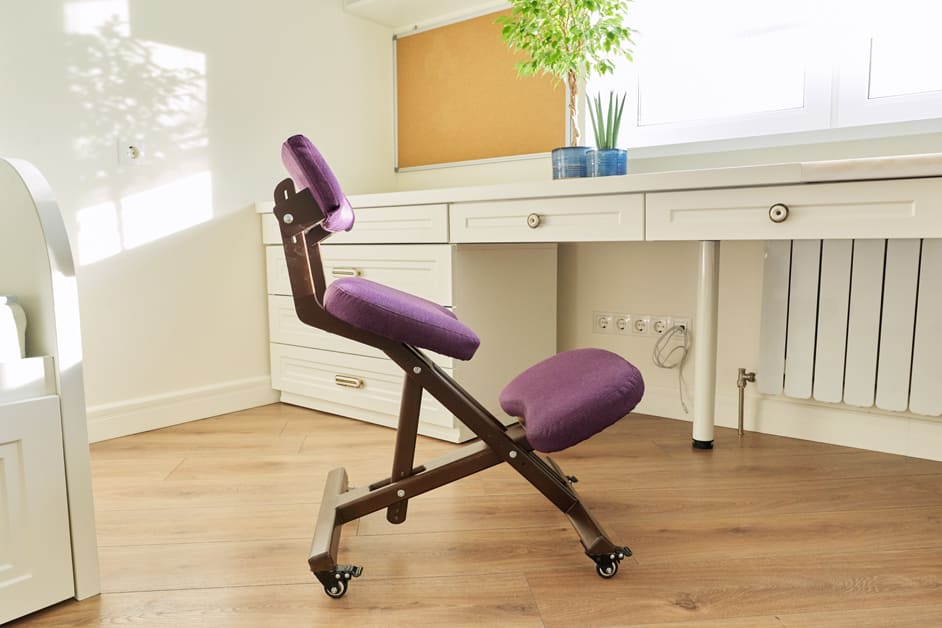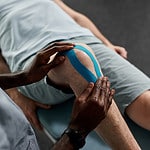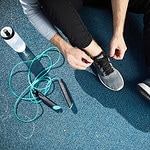Ergonomics
Ergonomics is the science of designing and arranging your environment to fit your body. It can make tasks easier and help maintain a healthy posture. Stress and knee pain can be reduced by applying ergonomic principles at home.
Let’s discuss how to make your home more knee-friendly with ergonomics!
Assess your workspace
Assess your workspace to make your home more knee-friendly. Mark a space around three feet wide. Make sure it’s comfortable to work in for long periods. Check the furniture and items.
- Chairs should be the proper height and cushioning.
- Desks should be the right size and height with enough room to pull out drawers while seated.
- Consider ergonomic keyboard trays and monitor stands.
- Get an adjustable desk to adjust desktop height and inclination.
- Invest in a footrest for extra comfort.
Invest in the right furniture
Ergonomics in the workplace is important. Invest in furniture for comfort and productivity. Get adjustable chairs, desks and more. Computer screens should be placed slightly below eye level. Use keyboards with wrist pads and adjustable stands. Allow movement to reduce stiffness and tension.
Ensure your office is comfortable and productive!
Invest in the right equipment
Investing in the right ergonomic equipment is a great way to guarantee comfy, efficient and safe use of your workstation. Get office furniture that adjusts to fit you and a chair that supports good posture – this helps stop tiredness and injury. Other ergonomically designed stuff like keyboard trays, document holders, monitor stands and foot rests should also be thought of for your setup.
When selecting office furniture, adjustability is key. Contemplate adjustable-height desks for a more comfortable way that follows body alignment guidelines. The same for chairs – look for those with adjustable seat height, backrest angle and tilt tension control settings. Moreover, search for chairs with contoured seatpads shaped according to the body while seated in a natural postural position at a proportional distance from desk or table surfaces.
Workplace tools should be adjusted based on individual needs and resource constraints. Keyboard trays provide support with proper wrist/palm/arm positioning when typing and using mice at slightly lower heights than tables or desks. Document holders can put screens at the right distance from users eyes and keep reference documents close. Monitor stands lift workspaces off tables for comfortable neck postures, reducing eye strain from long computer use. Also, footrests can prevent strain associated with feet not resting on stable surfaces for a long time.
Exercise
Exercise is ace for your knee-friendly home environment. Get physical to strengthen your knee muscles. This can increase mobility and stability and reduce pain too. Check out these exercises for a knee-friendly home!
Stretch regularly
It cannot be overemphasized how important stretching is. Doing it regularly can help you have better flexibility, reduce muscle tension, have better posture, and do better in physical activities.
Stretching should come after a warm-up, like walking or jogging for 5 minutes before you exercise. When stretching before or after exercise, aim to hold the stretch for 30-60 seconds. Dynamic stretches like lunges, squats, and calf raises are the best for pre-workout as they increase body temperature and get your muscles ready. After your workout, use static stretching. This involves holding a stretch at a comfortable intensity for 15-30 seconds, with 10-15 seconds in between each stretch.
Cooling down after exercise is just as vital; it stops cramps and injuries, and helps you recover faster.
Strengthen your core
Strengthening your core muscles is an amazing way to make your home environment more knee-friendly. It helps support your knees by strengthening the surrounding muscles and reduces tension in the joint. To do this, you can do a variety of exercise modalities like yoga, pilates, HIIT workouts and more. Even if you can’t attend an in-person class or a gym membership, there are still easy exercises you can do at home to build up your strength.
When strengthening the core for better knee health, start slow. Begin with basic exercises such as planks, hollow holds, dead bugs, and ab rollouts. These focus on building endurance before moving onto more dynamic movements like mountain climbers or wood chops. Gradually progressing to more difficult exercises will help make sure you don’t build too much tension in any one muscle group while improving knee health!
Consider low-impact exercises
Yoga, tai chi, and water aerobics are all low-impact exercises. This means they are gentler on joints than higher intensity activities. They are great for improving balance, coordination, and strength. All muscles are engaged without over-stressing any particular joint.
Stair steppers and ellipticals can be more intense exercises, with some body weight supported. Pilates focuses on posture, stabilization, and alignment. For those with joint problems, swimming and biking provide great aerobic benefits.
Diet
Revamp your diet for better knee health! Consume a variety of nutrient-filled foods to keep your joints lubricated and decrease inflammation. Include fatty-acid-rich edibles like salmon, mackerel and tuna for even more anti-inflammatory benefits and necessary nutrients for your body’s optimal functioning.
Increase your intake of anti-inflammatory foods
To live a healthy, pain-free life, increase your intake of anti-inflammatory foods. Foods that are rich in essential vitamins, minerals, and phytonutrients can be beneficial.
Choose plant-based foods such as fruits and vegetables, nuts, seeds, beans, and whole grains. They protect your body from inflammation and don’t put strain on your knees.
Include fatty fish like salmon or sardines in your diet. They have high omega-3 fatty acid content which is anti-inflammatory. Moderate amounts of lean protein from poultry, eggs, or dairy (if you’re not lactose intolerant) can reduce inflammation associated with knee osteoarthritis.
Most importantly, watch what you eat daily. Get rid of pain by having the majority of your meals come from whole grain carbohydrates and unprocessed ingredients. Too much sugar or processed food leads to health complications like arthritis and obesity. These are major contributors to chronic knee pain.
Reduce your sugar intake
Sugary foods give your body an energy boost, but afterwards there’s a crash. To dodge this rollercoaster, reduce your sugar intake and focus on nutrient-dense food like fruits and veg. This will help you stay healthy and maintain a healthy weight.
To cut down on added sugar:
- Check labels at the supermarket and avoid food with over 10 grams of sugar per serving.
- Replace sugary drinks like soda, sweet tea, juices and sports drinks with water or low-sugar options like unsweetened tea or sparkling water.
- When baking or cooking with fruit, use less sugar.
- Instead of sugary snacks, try sliced apples with nut butter or Greek yogurt with fresh berries.
- When you do want something sweet, use smaller amounts of honey or pure maple syrup instead of white table sugar.
Consider taking supplements
Considering taking supplements could be helpful. These could supplement your diet and give you the necessary nutrients for joint health. Glucosamine, chondroitin, fish oils and MSM may support cartilage health and reduce inflammation. Additionally, antioxidants found in fruits and veggies may help keep joints healthy. They can fight off free radicals which can harm tissue.
Make sure you’re getting enough of these nutrients – through diet or supplementation. Before beginning any supplement routine, check with a doctor or other healthcare provider to make sure it’s right for you.
Environment
Create a knee-friendly atmosphere in your home! This is beneficial for your knee health, mobility, and helps you do daily tasks without difficulty. Let’s look into how to make your home cozy for your knees:
- Incorporate ergonomic furniture.
- Opt for carpeted or padded flooring.
- Install handrails.
- Choose low-impact activities.
- Consider knee-friendly exercises.
Reduce clutter
Avoid clutter for a knee-friendly home. Scattered items are a hazard and make it tough for those with knee pain to get around. Sort and organize regularly. Donate or recycle unneeded items. Put stuff away when you’re done with it. Not too many items in storage. Keep the floor clutter-free. This lowers the risk of tripping and causing more pain and trouble.
- Sort and organize regularly.
- Donate or recycle unneeded items.
- Put stuff away when you’re done with it.
- Not too many items in storage.
- Keep the floor clutter-free.
Improve your posture
Good posture is essential for taking care of your knees. When you don’t have good posture, it places extra pressure on your muscles and joints.
To practice better posture:
- Keep your head up and directly over your shoulders.
- Keep your shoulders back.
- Pull in your abdominal muscles.
- Stand or sit with your feet slightly apart and equal weight on both feet.
- If standing for a long time, rest one foot on a stool or box. This can drastically reduce strain on the knees.
Invest in a supportive mattress
A knee-friendly home needs a supportive mattress. Look for a firm, cushioning mattress that provides back support. Foam mattresses are great for this. If you share the bed, opt for one with separate sleeping areas. Get orthopedic pillows to keep head and neck aligned while sleeping. Also, use one pillow or an adjustable base to reduce stress on your body, especially your knees.
Mindset
Creating a knee-friendly home environment begins with the right mindset. You must be willing to change your movements and thinking. To make sure your home is ergonomically sound and knee-friendly, it helps to have an attitude of improving overall body wellbeing.
Make a few changes, focus on safety, comfort, and ease of movement – this will create an environment where your knees and other joints will be better off.
Practice mindfulness
Practicing mindfulness can help create a knee-friendly home environment. It’s the practice of being in the present moment, with full attention and awareness to your thoughts, feelings, and experiences. It can help reduce knee pain by creating distance from the physical discomfort.
Rather than ignoring or “pushing through” the discomfort, focus on the sensations. This will help you become aware of what’s happening in your body. Then, you can come up with solutions for managing the pain. For example, deep breathing, stretching, or changing positions to reduce strain on the knees.
You don’t need to do an official mindfulness practice for it to work. Just pay attention to your experience right now. When the mind wanders or we try to push away discomfort, it intensifies. With mindful awareness, we feel more acceptance and compassion towards ourselves and our bodies.
Allow yourself moments throughout each day to pause and take notice of how you are feeling mentally and physically. From this place of heightened awareness, supportive actions will naturally follow.
Find ways to reduce stress
Ways to reduce stress and improve mental health are key for reaching goals, enhancing productivity and boosting overall well-being. Combating stress can be simple. There are multiple lifestyle changes that can make a big impact in managing stressful situations.
Creating and adhering to a routine is a practical way to reduce stress. Working out and eating healthy foods can help balance energy levels. Taking quality time for yourself and sleeping the recommended eight hours can build a balanced, daily routine.
Small self-care practices, like writing down thoughts, journaling, or practicing mindfulness/meditation, can reduce anxiety levels. Activities or hobbies that allow for self-expression and creativity (art, music, reading, nature walks) can help too. Connecting with friends and family may prevent feeling overwhelmed. Ask for help when needed; this might strengthen relationships.
No two people respond to stress the same way, so it’s important to find what works best for you. Experimentation may be needed, but finding ways that fit into your lifestyle will result in reducing stress levels.
Prioritize self-care
Start self-care to create a knee-friendly environment. Steps to protect and strengthen your joints will save energy and avoid knee pain. Low impact activities like walking, swimming, cycling, and yoga build strength and reduce stress on the knees.
Sleep quality matters too. Poor sleep can worsen knee pain or lead to injury. Buy a mattress and pillows that support your spine. Take naps during the day as needed to stay alert.
Also, aim for balanced eating. Get lots of vitamins, minerals, lean proteins, and healthy fats. Cut down on processed and sugary foods, which can lead to inflammation. This keeps your body strong, so you can do more without hurting your knees.
Frequently Asked Questions
Q1: What are some tips for making the home environment more knee-friendly?
A1: Here are some tips for making your home environment more knee-friendly:
- Choose a chair with good support, such as a well-padded chair with armrests.
- Place a pillow or cushion behind your lower back when sitting.
- Raise the height of your chair so your feet are flat on the floor.
- Choose a comfortable mattress and pillow.
- Invest in a good pair of shoes with plenty of shock absorption.
- Place a piece of carpet or rug on the floor in areas with hard surfaces.
- Do low-impact exercises such as yoga, swimming, and biking.
Q2: What should I do when my knee joints are painful?
A2: If your knee joints are painful, it’s important to take it easy and avoid activities that put additional strain on the knees. Rest, ice, and gentle stretching are usually recommended. You can also try elevating your legs and taking an over-the-counter pain reliever. If the pain persists, talk to your doctor about other treatment options.
Q3: What are some good stretching exercises for knee pain?
A3: Here are some good stretching exercises for knee pain:
- Straight leg raises
- Quadriceps stretches
- Hamstring stretches
- Calf stretches
- Hip flexor stretches
- Knee flexion and extension stretches.





